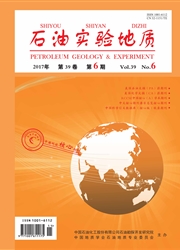

 中文摘要:
中文摘要:
基于地震剖面的解释和油气成藏模拟实验,探讨了滨里海盆地南缘盐相关构造和油气藏的特点。滨里海盆地南缘盐构造以高幅度的盐底辟和盐墙为主,并以盐焊接、盐滚或层状盐层相连,分别与盐上和盐下构造层相对应,发育2种油气成藏模式,即盐焊接构造相关油气成藏模式和盐下非均质性储层油气成藏模式。二维油气成藏物理模拟实验表明,盐焊接构造是盐上层系油气成藏的关键,而断层的发育和层间非均质性控制了盐下层系中油气的分布。模拟实验结果深化了对盐相关构造中石油聚集成藏的理论认识,对含盐盆地的油气勘探也有一定指导作用。
 英文摘要:
英文摘要:
Based on the interpretation of seismic profiles and hydrocarbon accumulation simulation,the characteristics of salt-related structures and reservoirs in the southern margin of Precaspian Basin are analyzed. Salt diapirs and salt walls are the main structure types in the study area,with welds,rolls or bedded layers of salt playing a connecting role between them. There are two hydrocarbon accumulation mode types,one associated with salt welds in the postsalt formations and the one with heterogeneous reservoirs in the presalt formations,divided by the salt layer. The 2D experimental modeling of oil migration and accumulation indicates that salt welding is the key of oil accumulation in the postsalt formations,while faults and interlayer heterogeneity control the distribution of oil in the presalt formations. The result is significant for understanding the oil migration and accumulation in salt-related structures and guiding oil exploration and development of salt-bearing basins.
 同期刊论文项目
同期刊论文项目
 同项目期刊论文
同项目期刊论文
 Structural deformation and fluid flow from East Sichuan to the northwestern periphery of the Xuefeng
Structural deformation and fluid flow from East Sichuan to the northwestern periphery of the Xuefeng Polygonal faults in the Sanzhao sag of the Songliao basin: their significance in hydrocarbon accumul
Polygonal faults in the Sanzhao sag of the Songliao basin: their significance in hydrocarbon accumul 期刊信息
期刊信息
